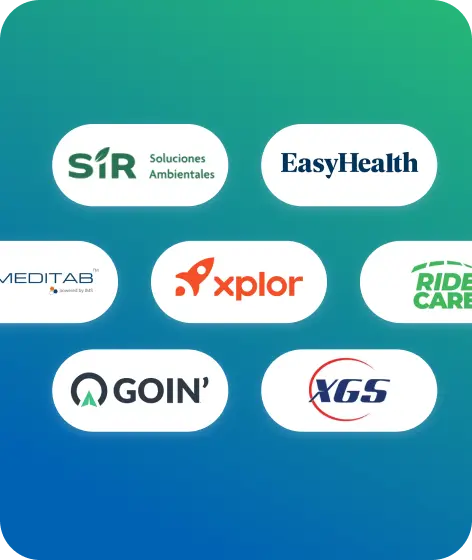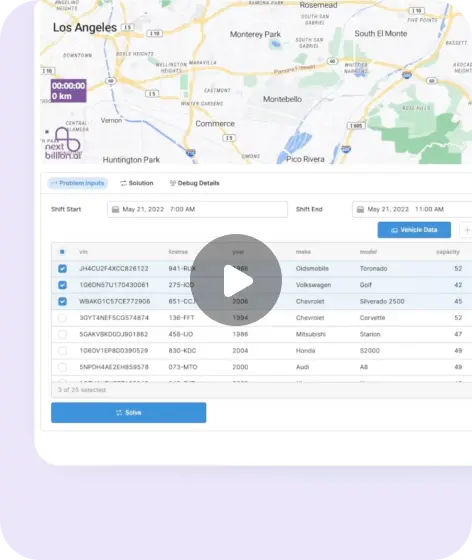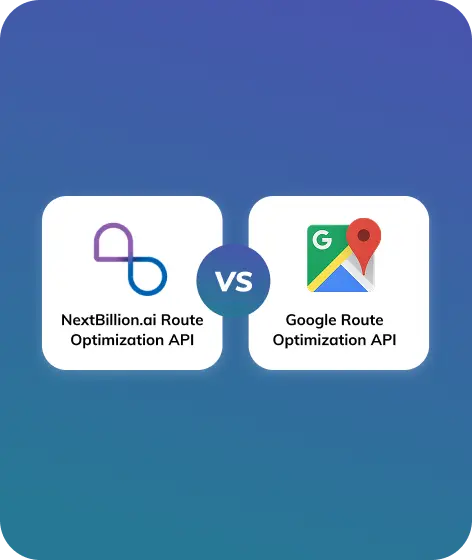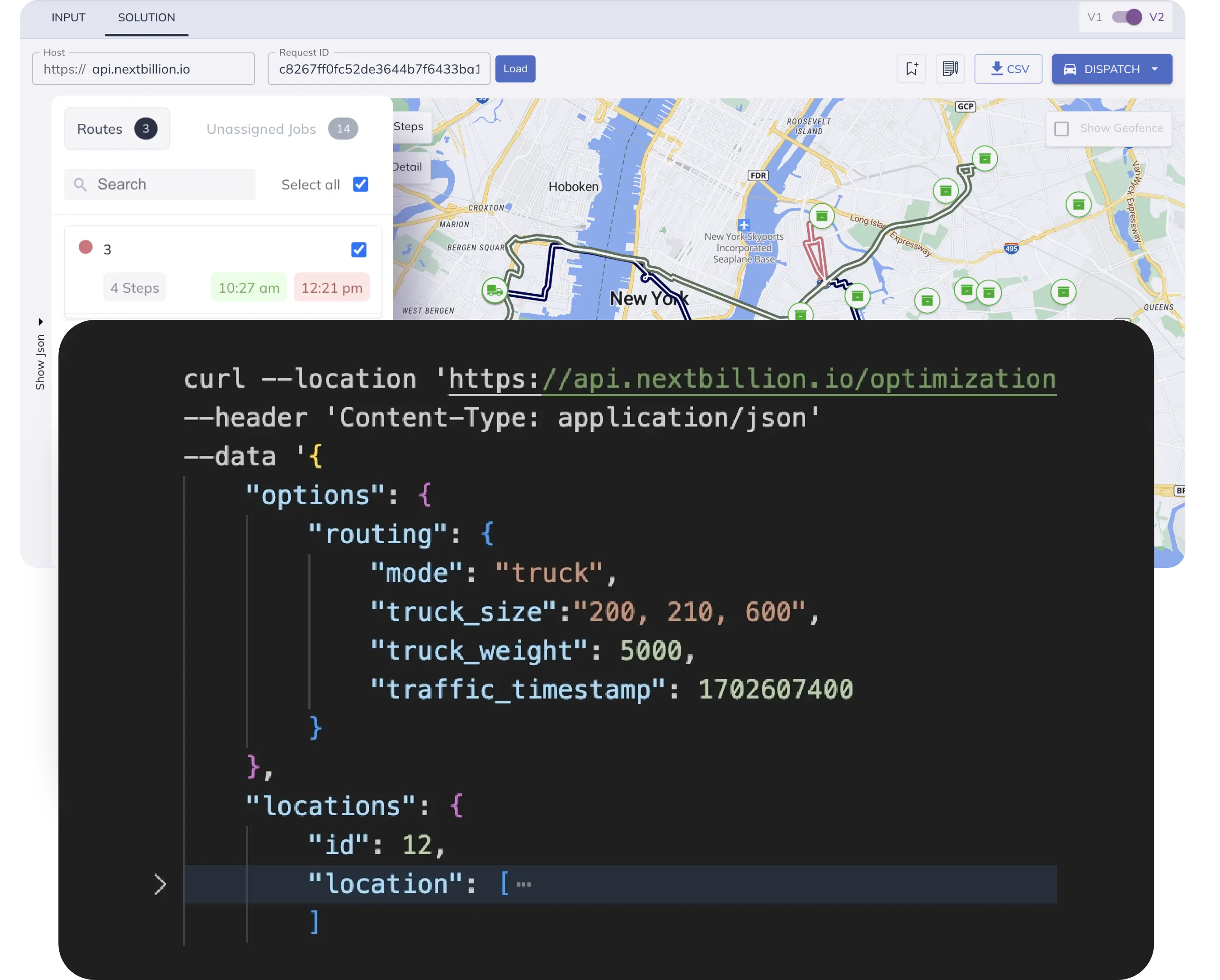Table of Contents
In tech businesses that operate fleets of vehicles, route optimization is the magic bullet for product and technology leaders that miraculously hits virtually every target they could wish for. Eliminating excess miles driven, lowering fuel expenses, minimizing vehicle wear and tear, reducing driver costs, completing jobs faster, enhancing customer and employee sentiment… the list is practically endless. The point is that you can get a lot of value out of route optimization software if you use it effectively — and this article is about helping you do just that.
When discussing route optimization software, it’s hard to ignore NextBillion.ai’s Route Optimization API. After all, it comes with 50+ hard and soft routing constraints, offers truck-specific routing, optimizes for custom objective functions and convincingly outperforms the market leader, all while remaining a cost-effective option. With a feature-rich solution like ours, you’ll have all the tools you need to get the most out of your route optimization software.
Here are 7 Tips for Route Optimization in 2025
Tip 1: Integrate Real-Time Traffic Data for Dynamic Routing
Planned routes are great, but they have an obvious blind spot — live traffic conditions. Though planned routes are usually based on historical traffic patterns, circumstances like road diversions, vehicular accidents and unusual weather can cause unpredictable traffic that throws off your ETAs. This is why advanced route optimization solutions like NextBillion.ai’s are built to process real-time traffic data.
Integrate live traffic data into your routing solution to enable dynamic routing that constantly analyzes and updates routes according to real-time, real-world traffic conditions. This data can also be utilized to enhance task allocation and dispatch for both planned and ad hoc jobs. The ability to maintain operational efficiency and flexibility in unplanned situations that’s made possible by this is invaluable.
Tip 2: Customize Routes to Your Unique Business Needs
Every business has unique routing needs and preferences that help it better achieve its operational goals. For example, UPS famously makes its trucks avoid left turns wherever possible, finding that this would help them avoid accidents and save time and fuel.
Depending on your operation, you might want to implement time- or vehicle- based road restrictions, no-go zones, cargo-dependent routes, compliance requirements, custom speed limits and more. Perhaps you want to optimize routes for shorter distances rather than quicker ETAs or to minimize emissions over cost. Whatever the case may be, the more constraints and routing options available, the better you can shape routes to your business needs.
Such customizability is one of NextBillion.ai’s strengths. Our Route Optimization API supports 50+ hard and soft routing constraints, customizable objective functions and routing profiles for everything from two-wheelers to 16-wheelers. We further empower you to create your own custom route permissions with our Road Editor App.
Tip 3: Ensure Continuous Growth With Scalable Routing Solutions
Early-stage companies often rely on completely manual route planning or use basic route optimization software and then edit the output manually to better conform to their operational requirements. While this may suffice initially, it quickly becomes an incredibly challenging resource- and time-intensive process as the business grows. It simply cannot be scaled up efficiently.
Make sure that you have a scalable routing solution that can grow with you. Look for one that maintains high performance and low latency even when executing large, complex optimizations. NextBillion.ai’s route optimization software supports up to 10,000 orders in a single route optimization problem. This, combined with our Distance Matrix API’s 5,000×5,000 distance matrix (as opposed to the standard 25×25 matrix), allows our customers to handle large-scale operations with ease.
Performance alone isn’t enough; cost is another factor to keep in mind. You don’t want API costs to grow proportionally as you scale! Find a solution with a pricing strategy that aligns with your operation and business model and makes expenses predictable. NextBillion.ai lets you choose between paying per API call, per asset or per task, so you can pick what works best for your business.
Read all about how NextBillion.ai powers shipping operations at scale for a time-critical logistics provider.
Tip 4: Enhance Routing Efficiency With Data Analytics
Logistics operations generate huge volumes of data. Use it! Regularly analyze your operational data to uncover insights that can improve route planning efficiency.
Thorough data analysis helps proactively identify patterns and trends that can inform future routing decisions. For example, analyzing customer behavior may highlight certain times of the day when customers are more likely to be available to receive deliveries, allowing you to schedule routes accordingly. Performance data, such as delivery times and completion rates, can help identify areas for improvement and optimize future routing decisions. For instance, you might identify recurring bottlenecks or inefficiencies with certain routes or drivers, enabling you to take corrective actions to improve performance.
NextBillion.ai equips you with the tools you’ll need to execute these analyses in the form of our Post-Trip Route API, Snap-to-Road API and Mileage Reports API.
Tip 5: Lower Emissions With Sustainable Route Planning
The importance of environmental consciousness has never more pronounced — especially so for logistics companies. And route optimization is arguably the most powerful tool at your disposal in the fight against greenhouse gas emissions.
Configuring your route optimization software for sustainable route planning goes a long way to meeting ESG goals. Consolidating shipments, planning routes for off-peak hours, prioritizing designated green routes and implementing constraints to minimize vehicle idling and time spent on road are just a few of the steps you can take.
NextBillion.ai has moved the sustainable route planning space forward with our innovation: the world’s first routing APIs focused on low-emission zones (LEZs). Built in conjunction with our partner, GeoJunxion, these APIs account for the regulations governing LEZ boundaries across Europe. Driving non-compliant vehicles in these zones draws sizeable fines. Our solution ensures that deliveries within LEZs are only allocated to compliant vehicles and that non-compliant vehicles are routed around rather than through these areas.
Tip 6: Consider Reliability and Redundancy for Operational Resilience
When transportation is a core function of your business, any failure in your route optimization software can have disastrous consequences. The financial cost alone could be crippling, and that’s saying nothing of the impact on customer trust and satisfaction. With this in mind, you’d be wise to check your solution provider’s SLAs, redundancy plans and track record of reliability. If you see anything that gives you cause for concern, address it with them at the earliest.
At NextBillion.ai, we’ve adopted best practices for distributed systems and map data management to ensure service reliability, which have helped us maintain 99.99% uptime of our dynamic routing technology. Another aspect of this lies in our ability to offer on-premise deployments of all our solutions. This gives customers far more control over the solution and lets them implement reliability measures of their own. It also allows customers to exercise tighter control over performance, cost, and data security and privacy
Tip 7: Adopt a Future-Ready Mindset to Stay Ahead
The explosion of AI in recent times has been fascinating to watch. The technology is quickly finding its way into practically every application anybody can think of, and route optimization is no different. Although the use of AI in logistics and routing is nothing new, we’re almost certainly going to see novel innovations and a rapid rise in the number of use cases it can be applied to. The near future will be a time of change.
It’s all too easy to get comfortable with the way you’ve always done things, but you must adopt a future-ready mindset to keep from being left behind by your competitors. Be unwilling or too slow to change, and you risk missing out on significant competitive advantages. Of course, there are risks associated with this, so don’t throw caution to the wind, but keep the doors open for progress with AI in logistics,
NextBillion.ai intends to be part of that progress. We’ve been in close communication with customers to better understand the problems they face in planning reliable and cost-efficient routes. This helps us continuously innovate, build new products and add capabilities to existing ones — and you can bet that AI will be involved.
Route Optimization is the Key to Success — Now and in the Future
By implementing these seven tips, you can streamline operations, reduce fuel consumption, minimize emissions and enhance customer satisfaction. From embracing cutting-edge technology and data analytics to prioritizing eco-friendly practices and continuous improvement, each tip offers a valuable strategy for getting the best out of your route optimization software.
Looking to the future, there’s no doubt that route optimization will continue to be crucial in shaping the success and resilience of businesses across industries. By staying proactive, adaptable and innovative, you can keep your business ahead of the curve and drive meaningful impact in the years to come. Here’s to a future where efficient route optimization not only enhances bottom lines but also contributes to a more sustainable world!
FAQs
- What sets NextBillion.ai’s Route Optimization API apart from others?
Superior performance and flexibility. Our API’s advanced algorithm outperforms the market leader by significant margins! The depth of customization is another factor. With 50+ constraints, custom objective functions, custom cost matrices, custom road permissions and flexible pricing, our API can be shaped into the perfect solution for any use case.
- How can businesses in the USA and Canada specifically benefit from NextBillion.ai’s solutions?
NextBillion.ai’s map data and coverage for North America are among the best available, even for remote areas and the Caribbean islands. We’ve developed products specifically for compliance with US regulations regarding working hours for drivers and state-wise mileage reports for International Fuel Tax Agreement (IFTA) requirements.
- What are some key considerations for product managers and tech leaders when choosing a route optimization API?
Some considerations to keep in mind when choosing a route optimization API include cost, scalability, customization options, customer support, compatibility with existing systems, accuracy of route predictions and the availability of essential features like real-time tracking and updates.
- How does NextBillion.ai incorporate AI to enhance route optimization?
Some of our most powerful product capabilities are powered by AI. These include predictive analytics based on historical data, machine learning for continuous improvements in routing decisions, optimization algorithms that analyze constraints and objectives, dynamic routing technology for operational efficiency and even the incorporation of personalization in routing.
Want to see what NextBillion.ai’s Route Optimization API can do for your business and how well it fits? Schedule a demo with our team, we’d be happy to oblige!
Ready to get started?
Request a DemoTable of Contents






